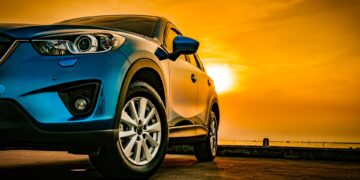As you’re driving, you may come across outside variables that make it harder for you to navigate. You should be aware of them ahead of time so that you can exercise the proper amount of caution and avoid possible accidents. With that said, here are five conditions that make driving more dangerous.
Rain
Rain is relatively common in most places, but that doesn’t make it any less serious when it comes to driving. The presence of water on the road lifts dried oil that has collected there from passing cars, creating a surface that’s more slippery than you might expect. Heavy rain can also make it harder for you to see clearly through your windows. When it’s raining, you should drive more slowly and leave more space between yourself and other drivers. This way, you’ll have enough room to brake safely.
Snow and Ice
The same threats of slippery roads and lowered visibility that you find with rain are present in snowy and icy conditions as well. However, they may exist at a much higher magnitude, warranting extra caution. Roads that haven’t been completely cleared are especially hazardous because your wheels don’t make as much contact with the ground. Drive more slowly and brake earlier when snow and ice are around, and keep a vigilant eye on other vehicles. Even though you may be fine, others around you may skid and threaten to crash into you.
Fog
Fog mainly affects your sight. The thick sheet of water vapor obscures the streets, vehicles, and obstacles ahead of you, making it harder to react to them. In addition to slowing down and maintaining a greater distance from other vehicles, you can use your windshield wipers to aid with visibility somewhat. Turn on your low-beam headlights, as high-beam lights will reflect off the fog back at you. If the fog is extremely thick, you should also turn on your fog lights. Remember that many regions require you by law to turn off your fog lights when oncoming cars draw near so that you don’t blind other drivers.
Sunrise and Sunset
Sunrises and sunsets on clear days are also conditions that make driving more dangerous. You may not think much of them, but the low position of the sun at those times can create a glare on your windshield and mirrors, making it impossible for you to see. If you often drive around sunrise or sunset, keep a pair of sunglasses in your car so that you can put them on when needed. Furthermore, keep your windows clean—dirt can exacerbate the glare that sunlight causes.
Darkness
Driving at night naturally makes it harder for you to see. When no other drivers are nearby, you can turn on your high-beams to brighten the road, but as with fog lights, you must turn them off when you see oncoming vehicles to avoid blinding other drivers. There are also other methods to help you see better when you’re driving at night. For example, you can make a conscious effort not to stare at others’ headlights so that your eyes don’t adjust to them. Keeping your windows clean to reduce glare from streetlights and other cars’ lights can also help.





















































































